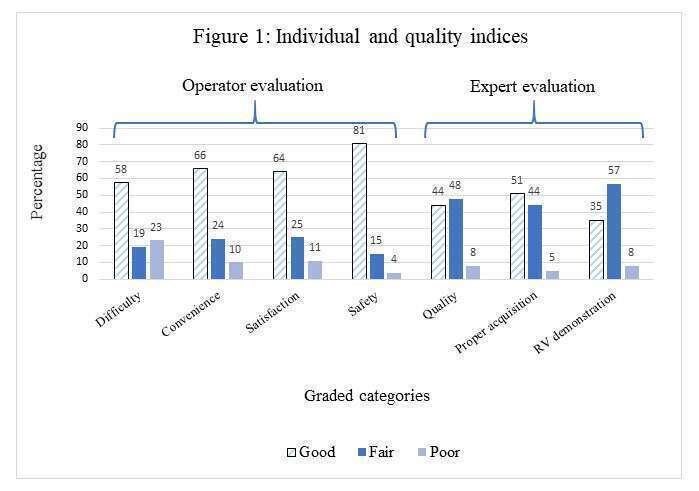
The utilization, safety, and feasibility of echocardiographic assessment of COVID-19 patients using a hand-held ultrasound
2Intensive Care Unit, Shaare Zedek Medical Center, Faculty of Medicine Hebrew University, Israel
3Emergency Department, Shaare Zedek Medical Center, Faculty of Medicine Hebrew University, Israel
Background: The association between COVID-19 infection and the cardiovascular system necessitates the use of cardiac imaging in selected patients. Strict precaution requirements limit the use of formal complete echocardiography in this setting. Information on the utilization, safety, and quality of point-of-care cardiac ultrasound (POCCUS) using a hand-held device in these patients is scarce.
Aims: To investigate the safety, technical aspects, and quality indices of hand-held echocardiography in patients with COVID-19.
Methods: Consecutive patients with COVID-19 underwent POCCUS evaluation by cardiologists or intensive care unit physicians. Following each examination, the operators recorded a series of technical parameters and graded aspects of individual experience. The acquired examinations were further analyzed by a blinded echocardiography expert for quality, proper acquisition, and right ventricular demonstration.
Results: Among 103 patients, 66 (64%) were male. Their mean age was 60±18, with a BMI of 28±6 and a heart rate of 79±13. Twenty-nine (28%) patients couldn’t turn on their left side and Twenty-three (22%) couldn’t maintain effective communication. The mean length of each study was 9.8±3.5 minutes, the battery usage was 14±5%, and the mean proximity between the operator and head of the patient was 60±11 cm. All predefined echocardiography views were fully completed in 76% of examinations. Individual and quality indices are presented in Figure 1. A substantial positive correlation was demonstrated between both operator and expert for test quality (r=0.552; p=0.001), and LVEF (r=0.608; p<0.001).
Conclusions: Echocardiography with a hand-held ultrasound is a safe and reasonable alternative for complete formal echocardiography in patients with COVID-19 with less than 10% of cases categorized as poor quality, acquisition, or RV demonstration.

Powered by Eventact EMS